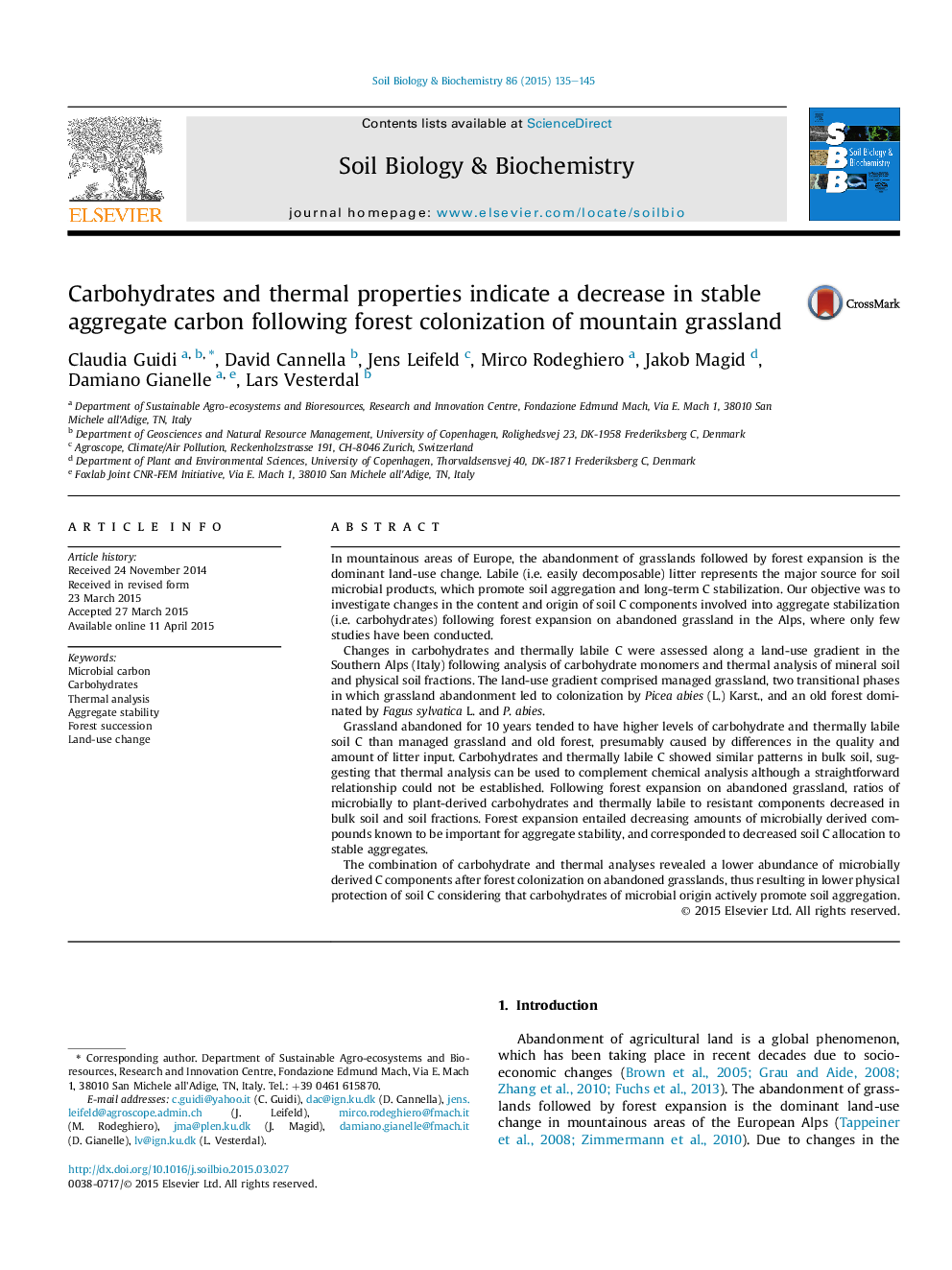| Article ID | Journal | Published Year | Pages | File Type |
|---|---|---|---|---|
| 2024529 | Soil Biology and Biochemistry | 2015 | 11 Pages |
•Forest expansion on mountain grassland decreased stable aggregate-C.•Carbohydrates were higher in abandoned than in managed grassland and old forest.•Microbially derived carbohydrates decreased following forest expansion.•Microbially derived and thermally labile C were positively related to stable aggregate-C.
In mountainous areas of Europe, the abandonment of grasslands followed by forest expansion is the dominant land-use change. Labile (i.e. easily decomposable) litter represents the major source for soil microbial products, which promote soil aggregation and long-term C stabilization. Our objective was to investigate changes in the content and origin of soil C components involved into aggregate stabilization (i.e. carbohydrates) following forest expansion on abandoned grassland in the Alps, where only few studies have been conducted.Changes in carbohydrates and thermally labile C were assessed along a land-use gradient in the Southern Alps (Italy) following analysis of carbohydrate monomers and thermal analysis of mineral soil and physical soil fractions. The land-use gradient comprised managed grassland, two transitional phases in which grassland abandonment led to colonization by Picea abies (L.) Karst., and an old forest dominated by Fagus sylvatica L. and P. abies.Grassland abandoned for 10 years tended to have higher levels of carbohydrate and thermally labile soil C than managed grassland and old forest, presumably caused by differences in the quality and amount of litter input. Carbohydrates and thermally labile C showed similar patterns in bulk soil, suggesting that thermal analysis can be used to complement chemical analysis although a straightforward relationship could not be established. Following forest expansion on abandoned grassland, ratios of microbially to plant-derived carbohydrates and thermally labile to resistant components decreased in bulk soil and soil fractions. Forest expansion entailed decreasing amounts of microbially derived compounds known to be important for aggregate stability, and corresponded to decreased soil C allocation to stable aggregates.The combination of carbohydrate and thermal analyses revealed a lower abundance of microbially derived C components after forest colonization on abandoned grasslands, thus resulting in lower physical protection of soil C considering that carbohydrates of microbial origin actively promote soil aggregation.
